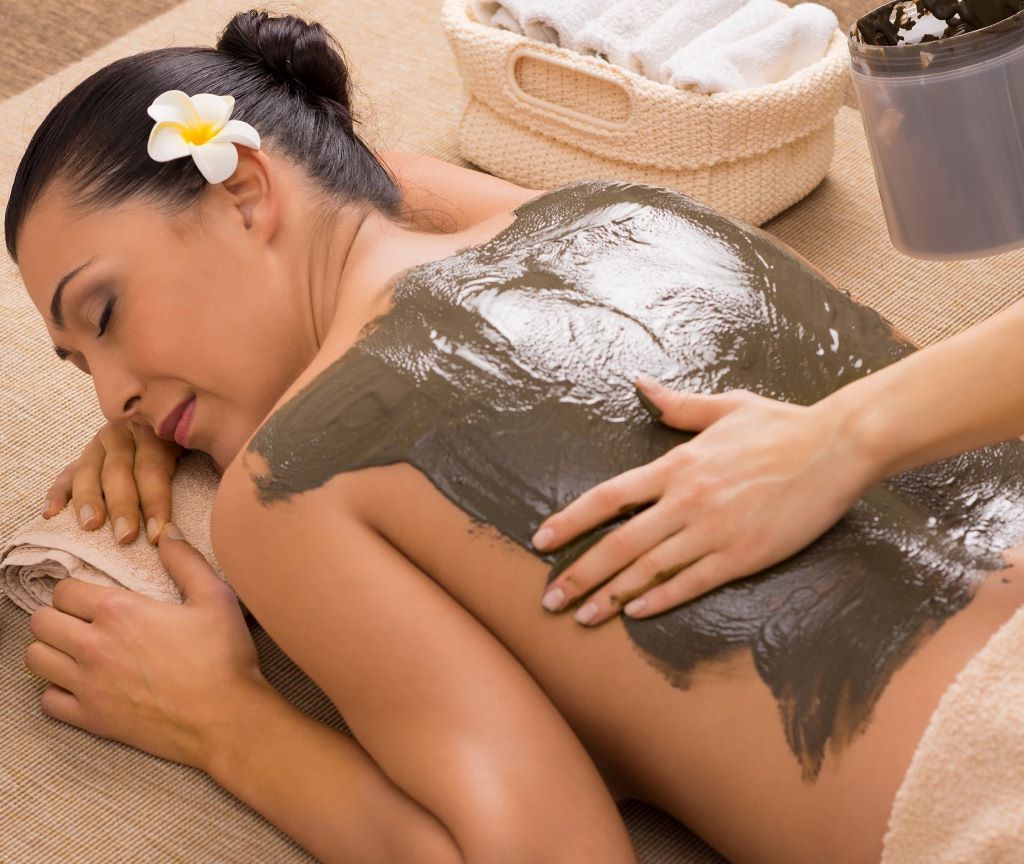
Choosing the Right Type of Clay for a Body Wrap
Choosing the right type of clay for a body wrap can transform your spa experience. Clays detoxify, nourish, and rejuvenate skin, but not all are equal. The wrong choice may irritate skin or fail to deliver results. With options like bentonite, kaolin, and French green clay, it’s easy to feel overwhelmed. This guide simplifies the process, helping you pick the perfect clay for your needs. Whether you seek hydration, detoxification, or soothing relief, understanding clay properties is key. Let’s explore how to select the right type of clay for a body wrap to achieve glowing, healthy skin. We suggest visiting the laser hair removal in midtown Manhattan.
Why Clay Matters in Body Wraps
Clay is the heart of a body wrap, delivering therapeutic benefits. It draws out toxins, boosts circulation, and nourishes skin with minerals. However, each clay type offers unique properties. For example, bentonite clay excels at detoxification, while kaolin soothes sensitive skin. Choosing the right type of clay for a body wrap ensures you target specific skin concerns effectively.
Additionally, clay quality impacts results. Poor-quality clays may contain impurities, reducing benefits. According to a 2019 study by the Journal of Cosmetic Dermatology, high-purity clays enhance skin hydration by 20% compared to low-grade options. Therefore, always opt for reputable brands. My first body wrap used low-quality clay, leaving my skin dry. Switching to pure bentonite made a noticeable difference, proving clay choice matters. Visit the best anti aging facial in midtown Manhattan to get the best care for anti aging.
Types of Clay for Body Wraps
Bentonite Clay
Bentonite clay, formed from volcanic ash, is a powerhouse for detoxification. Its negative charge attracts positively charged toxins, pulling them from the skin. It’s ideal for oily or acne-prone skin but can be drying for sensitive types. Mix it with water or apple cider vinegar for best results.
Moreover, bentonite is rich in minerals like calcium and magnesium, which nourish skin. A 2021 study in the International Journal of Dermatology found bentonite reduces acne by 15% after four weeks of use. However, overuse may strip natural oils. I used bentonite weekly for a month and saw clearer skin, but I balanced it with moisturizing wraps to avoid dryness.
Kaolin Clay
Kaolin clay, often called white clay, is gentle and suits sensitive or dry skin. It cleanses without stripping oils, making it perfect for calming irritated skin. Available in white, pink, or red varieties, pink kaolin blends benefits for combination skin. Its mild nature ensures comfort during wraps.
Furthermore, kaolin improves skin texture by exfoliating dead cells. According to the Journal of Cosmetic Science, kaolin boosts skin smoothness by 10% after regular use. Apply it with rose water for hydration. My sensitive skin reacted well to kaolin wraps, leaving it soft and calm, unlike harsher clays that caused redness.
French Green Clay
French green clay, rich in minerals like iron and magnesium, is excellent for oily or combination skin. Its vibrant color comes from decomposed plant matter, enhancing its detoxifying power. It absorbs excess oil and tightens pores, giving skin a refreshed look. Mix with aloe vera for soothing effects.
Additionally, this clay stimulates blood flow, promoting a healthy glow. A 2020 study by the European Journal of Dermatology noted green clay reduces sebum production by 12%. However, it may feel intense for dry skin. I tried a green clay wrap before an event, and my skin looked radiant, but I followed with a hydrating mask to balance it.
Factors to Consider When Choosing Clay
Skin Type
Your skin type is crucial when choosing the right type of clay for a body wrap. Oily skin benefits from absorbent clays like bentonite or French green, which control sebum. Dry or sensitive skin prefers kaolin for its gentle cleansing. Combination skin may alternate between clays for balanced results.
Moreover, testing clays on a small patch prevents reactions. For instance, my combination skin tolerated bentonite on oily areas but needed kaolin elsewhere. Understanding your skin ensures effective wraps. Consult a dermatologist if unsure, as they can recommend clays based on your skin’s needs.
Desired Benefits
Clays target specific goals, like detoxification, hydration, or exfoliation. Bentonite excels at detox, kaolin hydrates, and French green tightens pores. Define your goal before choosing. For example, I used kaolin wraps for hydration during winter, switching to bentonite for summer detox needs.
Furthermore, combining clays can address multiple concerns. A 2022 study in Skin Research and Technology showed mixed-clay wraps improve skin elasticity by 8%. Experiment with blends, but start with single clays to understand their effects. Aligning clay with your goals maximizes wrap benefits.
Allergies and Sensitivities
Check for allergies before using clay. Some contain trace metals that may irritate sensitive skin. Always read labels and choose pure, hypoallergenic clays. Patch-test new clays to avoid adverse reactions. My friend skipped this step and had mild redness from green clay.
Additionally, consult a professional if you have chronic skin conditions. The American Academy of Dermatology suggests hypoallergenic clays for eczema-prone skin. Mixing clays with soothing ingredients like chamomile reduces risks. Prioritizing safety ensures a pleasant wrap experience.
How to Apply a Clay Body Wrap
Preparation
Start with clean, exfoliated skin to maximize clay absorption. Mix clay with water or hydrosols to form a smooth paste. Use non-metal bowls, as metals may react with clay. Apply a thin layer to avoid cracking. I learned this after my first uneven wrap dried poorly.
Moreover, wrap treated areas with plastic or towels to lock in heat, enhancing detox. Leave on for 15–20 minutes, then rinse with warm water. Follow with moisturizer to seal in benefits. Proper prep ensures the clay works effectively.
Aftercare
Post-wrap care is vital for lasting results. Hydrate skin with a natural moisturizer like shea butter. Drink water to support detoxification. Avoid harsh soaps for 24 hours, as they strip oils. My skin felt tight after a bentonite wrap, but lotion restored softness.
Furthermore, repeat wraps weekly for best results, adjusting based on skin response. Overuse can dry skin, so monitor effects. According to Dermatology Reports, weekly clay wraps improve skin clarity by 10%. Consistent aftercare enhances the benefits of choosing the right type of clay for a body wrap.
Where to Buy Quality Clay
Purchase clays from trusted suppliers to ensure purity. Check for certifications like USDA Organic to avoid contaminants. Online reviews guide reliable choices.
Additionally, avoid bulk buys from unknown sources, as they may contain impurities. I once bought cheap clay from a marketplace, and it irritated my skin. Spending more on quality clay saved me discomfort later. Prioritize vendors with transparent sourcing for safe wraps.
Conclusion
Choosing the right type of clay for a body wrap elevates your skincare routine. Bentonite detoxifies, kaolin soothes, and French green clay balances oil. By matching clay to your skin type and goals, you unlock radiant results. Quality matters, so invest in pure clays from trusted sources. My journey with clay wraps taught me the value of informed choices, transforming my skin’s health. Experiment with clays, but listen to your skin’s needs. Ready to glow? Share your clay wrap experiences in the comments or spread this guide with friends!
Finally, we recommended the best facials in midtown Manhattan and the best manicure in midtown Manhattan to know more details.
FAQs
What is the best clay for sensitive skin?
Kaolin clay is ideal for sensitive skin. It cleanses gently without stripping oils, reducing irritation risks.
Can I mix different clays for a body wrap?
Yes, mixing clays like kaolin and bentonite can address multiple skin concerns. Start with small amounts to test compatibility.
How often should I do a clay body wrap?
Weekly wraps work best for most skin types. Overuse may dry skin, so monitor and adjust frequency.
Are there side effects of clay body wraps?
Clay wraps are safe but may cause dryness or irritation if overused. Patch-test new clays to avoid reactions.
Where can I find pure clay for wraps?
Trusted suppliers like Mountain Rose Herbs or Frontier Co-op offer high-quality, pure clays for safe body wraps.


